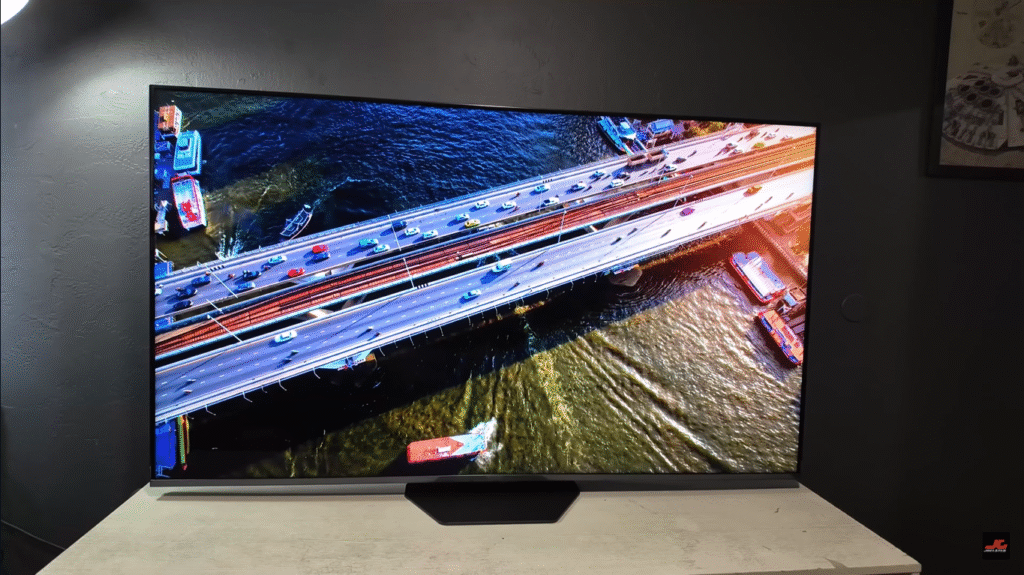The Hisense U8QG (2025 model) is undoubtedly an impressive TV, boasting incredible brightness, thousands of local dimming zones, and cutting-edge gaming features. It offers a compelling package for many, especially given its competitive price point. However, like any advanced piece of technology, it comes with certain trade-offs and potential drawbacks that might not suit every buyer.
As a TV reviewer, my aim is to provide a balanced and honest perspective. Let’s delve into the Top 5 Reasons to AVOID the Hisense U8QG, highlighting potential compromises you should be aware of before making this significant investment.
1. Potential for “Panel Lottery” / Dirty Screen Effect (DSE)
While my review unit was “lucky” with a clean panel, the nature of Full Array Local Dimming (FALD) and Mini-LED technology means there’s always a risk of panel lottery.

- Inconsistent Uniformity: Some units might exhibit variations in screen uniformity, leading to what’s known as the “Dirty Screen Effect” (DSE). This can appear as subtle blotches or darker areas, particularly noticeable during panning shots or on uniform backgrounds.
- Risk of Imperfections: While not guaranteed, the possibility exists that your specific unit might not have the same perfect uniformity as a “lucky” panel, which could detract from the viewing experience for discerning eyes.
2. Bulkier Design (Thicker and Heavier)
Compared to some of its sleeker competitors, particularly OLED TVs, the Hisense U8QG is a more substantial piece of hardware.
- Increased Thickness: The TV is noticeably thicker than many other models, likely due to the extensive local dimming backlight system. This might be a concern for those seeking a very slim, minimalist aesthetic for their living space.
- Significant Weight: It’s also heavier than many TVs in its class. This can make wall-mounting more challenging and might require more robust mounting solutions, or even professional installation, adding to the overall cost and effort.
3. Overwhelming Brightness in Dark Viewing Environments
While its 5,000+ nits peak brightness is a major pro for HDR and bright rooms, it can be a double-edged sword for specific setups.
- Eye Strain in Dark Rooms: In a very dark home theater environment, the sheer intensity of the U8QG’s brightness can be overwhelming and potentially cause eye strain, even after adjustments.
- Requires Manual Adjustment: Users who frequently switch between bright and dark room viewing might find themselves constantly adjusting the peak brightness setting to suit the ambient light, which can be inconvenient.
4. Built-in AI Picture Enhancements Can Degrade Image Quality
Despite being marketed as “enhancements,” some of the TV’s AI processing features might actually detract from the original picture.
- Distorts Original Content: Features like “AI Contrast” and “HDR Enhancer” were noted in the review as potentially “messing around with the whole picture” or adding unwanted color saturation.
- Requires Disabling for Purity: For the best and most accurate picture quality, it’s often recommended to turn these “enhancement” features off, which means you’re not fully utilizing all the advertised processing power.
5. Not Professionally Calibrated Out-of-the-Box for Accuracy
While the TV looks beautiful to the eye with basic adjustments, it might not satisfy purists seeking absolute color accuracy.
- Lacks Professional Accuracy: Reports suggest that out-of-the-box, the U8QG may not be perfectly color-accurate according to professional calibration standards.
- Additional Cost for Perfection: If you desire a truly “picture perfect” display for critical viewing or content creation, you might need to invest an additional $500-$600 for professional calibration, adding to the TV’s overall cost.
Conclusion: Weighing Performance Against Practicality
The Hisense U8QG is an undeniably powerful and feature-rich TV that offers incredible value for its picture quality. However, it’s crucial to consider these potential drawbacks: the inherent risk of panel lottery, its bulkier design, the overwhelming brightness in dark settings, the need to disable some AI enhancements for optimal picture, and the lack of professional calibration out-of-the-box.
If you prioritize absolute picture uniformity, a super-slim profile, or a perfectly calibrated image without extra cost, these factors might lead you to explore other options. Understanding these trade-offs will help you make the best decision for your home entertainment needs.
About the Author: JoelsterG4K Hello guys Im Joelster and I love tech, gaming, movies. and I get my hands on the products I review and share my experience with you, welcome to the channel, Im Joelster and lets do this.



[…] Top 5 Reasons to AVOID Hisense U8QG (2025) […]